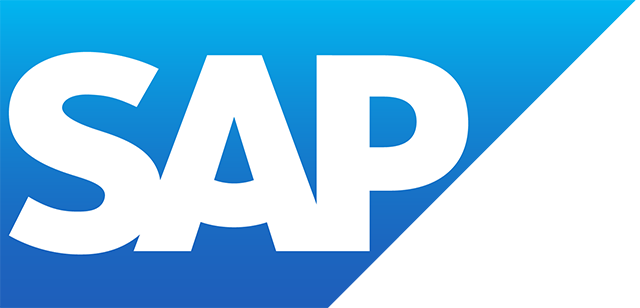SAP Marketing Automation
Filter By
Browse By
- SAP Analytics and AI
- SAP Application Development and Integration
- All SAP Application Development and Integration
- SAP ABAP
- SAP ABAP Development Tools
- SAP ABAP Test Cockpit
- SAP API Management
- SAP BAPI
- SAP Basis
- SAP BRF
- SAP Business Application Studio
- SAP CMS
- SAP Design Studio
- SAP Development Tools
- SAP DevOps
- SAP EAI
- SAP EDI
- SAP Extension Suite
- SAP Fiori
- SAP Fiori Elements
- SAP Integration Suite
- SAP Low Code Application Development
- SAP Low Code Automation
- SAP Netweaver
- SAP Release Management
- SAP UI5
- SAP Web Application Server
- SAP Web IDE
- SAP Business Process Management
- SAP Center of Excellence
- SAP CIO
- SAP Customer Experience
- SAP Data and Data Management
- All SAP Data and Data Management
- SAP BW
- SAP BW/4HANA
- SAP Crystal Reports
- SAP Data Archiving
- SAP Data Center
- SAP Data Governance
- SAP Data Integration
- SAP Data Migration
- SAP Data Quality
- SAP Data Services
- SAP Data Strategy
- SAP Data Visualization
- SAP Data Warehouse Cloud
- SAP DMS
- SAP Document Control
- SAP EIM
- SAP ETL
- SAP ETL Tools
- SAP HANA
- SAP HANA Administration
- SAP HANA Deployment Infrastructure
- SAP HANA Studio
- SAP Master Data
- SAP Master Data Governance
- SAP MDM
- SAP Enterprise Architect
- SAP Enterprise Asset Management
- SAP ERP
- SAP Finance
- All SAP Finance
- SAP Accounting
- SAP AR AP
- SAP Asset Accounting
- SAP Billing Systems
- SAP BPC
- SAP BRIM
- SAP Cash Management
- SAP Central Finance
- SAP Controlling
- SAP COPA
- SAP Cost Center Accounting
- SAP Currency Risk
- SAP e-invoicing
- SAP FICO
- SAP Finance Automation
- SAP Advanced Financial Closing
- SAP Financial Consolidation
- SAP Financial Planning
- SAP FX Risk
- SAP General Ledger
- SAP Global Tax Management
- SAP Hyperion
- SAP Order to Cash
- SAP Payment Processing
- SAP Profitability Analysis
- SAP Rebate Management
- SAP S/4HANA Finance
- SAP SWIFT Compliance
- SAP Treasury Management
- SAP Universal Journal
- SAP Governance Risk and Compliance
- SAP Human Capital Management
- SAP Intelligent Technologies
- SAP Platform and Technology
- All SAP Platform and Technology
- SAP Business Technology Platform
- SAP Cloud
- SAP Cloud Connector
- SAP Cloud Integration Platform
- SAP Cloud Migration
- SAP Cloud Platform
- SAP Cloud Providers
- SAP Cloud Strategy
- SAP Digital Signature
- SAP Container Platform
- SAP HANA Enterprise Cloud
- SAP Digital Asset Management
- SAP Smart Forms
- SAP HEC
- SAP Digital Integration Hub
- SAP Hyperscalers
- SAP Infrastructure
- SAP Messaging
- SAP Quality and Testing
- SAP Security
- SAP Spend Management
- SAP Supply Chain Management
- All SAP Supply Chain Management
- SAP APO
- SAP Asset Management
- SAP Business Network
- SAP Digital Manufacturing Cloud
- SAP Digital Twin
- SAP EWM
- SAP IBP
- SAP Inventory Management
- SAP Label Printing
- SAP Logistics
- SAP Manufacturing
- SAP Manufacturing Automation
- SAP MES
- SAP MII
- SAP MM
- SAP MRO
- SAP MRP
- SAP Order Management
- SAP Plant Maintenance
- SAP PLM
- SAP Production Planning
- SAP S&OP
- SAP SD
- SAP SPM
- SAP Supply Chain Planning
- SAP Track and Trace
- SAP Transportation Management
- SAP System Administration
SAP Marketing Automation Increases ROI of Marketing Budgets
Marketing automation is a modern technology that automates routine marketing processes, assists with customer data and campaign management, and helps run omni channel campaigns across multiple channels. Today’s marketing automation tools assist in data-driven decision making and execution of marketing programs, thus delivering higher return-on-investment from marketing investments.
SAP Marketing Automation Increases ROI of Marketing Budgets
Marketing automation is a modern technology that automates routine marketing processes, assists with customer data and campaign management, and helps run omni channel campaigns across multiple channels. Today’s marketing automation tools assist in data-driven decision making and execution of marketing programs, thus delivering higher return-on-investment from marketing investments.
Typically, marketing automation automates tasks such as:
- Customer data management and maintenance
- Audience targeting and segmentation
- Generating, nurturing, and scoring leads
- Ensuring GDPR and other compliance requirements
- Applying analytics to optimize content and marketing strategies
- A/B testing of content and messages to improve conversion rates
- Increased audience retention
SAP Marketing Automation
SAP provides marketing automation capabilities as part of CRM solutions that are easy-to-use, web-based, and available on a subscription basis. Marketers can analyze, plan, execute, and measure all marketing activities. Some of the features include:
- Marketing resource management
- Segment and list management
- Campaign management
- Trade promotion management
- Lead management
- Marketing analytics
mySAP CRM also supports several industry-specific processes with functionality designed to meet the individual needs of diverse industry groups.
SAP Marketing Cloud
SAP Marketing Cloud enables marketers to understand the real-time intent of individual customers to dynamically deliver contextually relevant experiences across channels, devices, and throughout the entire customer journey.
Some key features are built in to enable personalized customer experiences and lead generation, such as:
- Integrated customer engagement
- Prebuilt industry-specific analytics and use cases
- Channel-agnostic, customer-centric personalization engine
- Embedded marketer-friendly AI and predictive analytics
- Real-time cross-channel marketing automation
- Integrated customer intelligence and loyalty
969 results
-

 Premium
Premium
Configure a Matrix Organization Structure to Track Skills and Responsibilities Across Product Lines
Reading time: 9 mins
R/3 Organizational Management allows you to configure and define objects and relationships to create non-hierarchical views of your organization. These views go across departmental and business lines and they provide more efficient reporting, task management, and resource planning. You can use matrix organizations in R/3 to display large, complex organizations or small, project-based groups. Key...…
-

 Premium
Premium
Improve Your Data-Entry Efficiency and Accuracy with Defaults
Reading time: 21 mins
The integrity of your master data is vital to your business. Manual data entry is often the source of errors in master data. To minimize incorrect information in your system, you can use standard functionality to default commonly used master data values and processes. Key Concept The 4.6C system has more than 4,000 user parameters....…
-

 Premium
Premium
Ask the HR Expert How to Add or Change Tab Pages in Organization and Staffing
Reading time: 7 mins
Standard configuration steps in the IMG allow you to add and modify the tab pages that appear in the detail section of the Organization and Staffing screen for Organizational Management (OM). You can insert existing infotypes or custom infotypes and change the description of the infotypes. Key Concept In a past issue, you wrote about...…
-
-

 Premium
Premium
Ask the HR Expert: What’s the Difference Between Long- and Short-Term Documents in Report RPUAUD00?
Reading time: 6 mins
You have two ways to track and report on changes to infotype and field data. Long- and short-term documents allow you to report on infotype changes in report form or to track changes to specific fields in combination with other fields. However, SAP’s use of “long term” and “short term” has a different meaning than...…
-

 Premium
Premium
Put Better Programs into Production in Less Time with Code Reviews: What They Are, How to Conduct Them, and Why
Reading time: 2 mins
There is no substitute for a close examination of others’ code before it is released into production. A “code review” is the process of having someone other than the author evaluate a program at various points in the development cycle, prior to placing it into productive use. This article provides a brief introduction to the...…
-

 Premium
Premium
Easily Build or Change Infotype Headers in R/3
Reading time: 12 mins
Understanding the structure of infotype headers and how to change them to meet your needs can improve efficiency and allow users to browse data more effectively. The author explains the steps involved in creating and modifying headers, including optional configuration if you want to take advantage of functionality such as the use of passport photos...…
-

 Premium
Premium
Simplify OM Maintenance with the Organization and Staffing Mode
Reading time: 65 mins
Organizational Management (OM) is an important part of SAP HR because of its organizational charts, planning data, and key role in module integration. In the first of a two-part series on viewing and maintaining OM structures in R/3 HR, the author describes the Organization and Staffing mode of maintenance. Its graphical nature makes it easy...…
-
-

 Premium
Premium
Conquer Context Problems in HR Security
Reading time: 13 mins
When the same HR user is in charge of multiple tasks, conflict problems can occur on the subject of how much authorization to grant the user. The author compares the technical differences between general and structural authorization and how to optimize their usage. He also describes SAP’s context-sensitive authorization functionality in R/3 Enterprise Release 4.70....…
-

 Premium
Premium
Move Beyond “Drag and Drop” with the OM Maintenance Expert Mode
Reading time: 36 mins
In the second of a two-part series about viewing and maintaining Organizational Management (OM) structures in SAP HR, the author covers the Expert mode of maintenance. Using screenprints, he explains the Expert mode’s functionality as well as its benefits and drawbacks. The following is the second of a two-part series on viewing and maintaining Organizational...…
-

 Premium
Premium
Develop and Retain Talent by Incorporating Careers in Your R/3 Succession Planning
Reading time: 12 mins
Succession planning allows companies to build plans for developing and retaining talent. The SAP R/3 Human Resources module offers standard functionality for succession planning, career planning, and employee development. The author focuses on how to build and use the career object in R/3 as part of your overall succession plan. Human capital is an important...…
Become a Member
Unlimited access to thousands of resources for SAP-specific expertise that can only be found here.
Become a Partner
Access exclusive SAP insights, expert marketing strategies, and high-value services including research reports, webinars, and buyers' guides, all designed to boost your campaign ROI by up to 50% within the SAP ecosystem.
Upcoming Events
Related Vendors
Your request has been successfully sent


